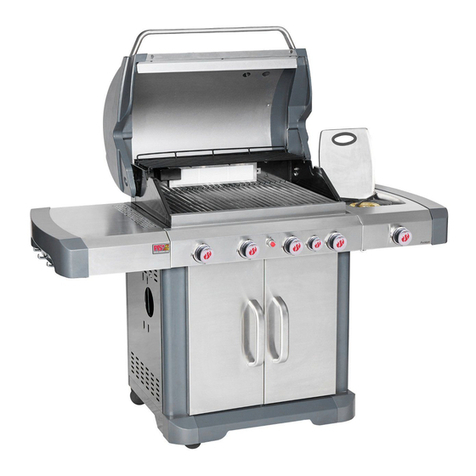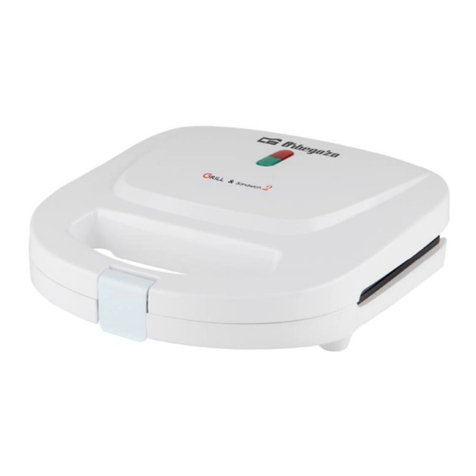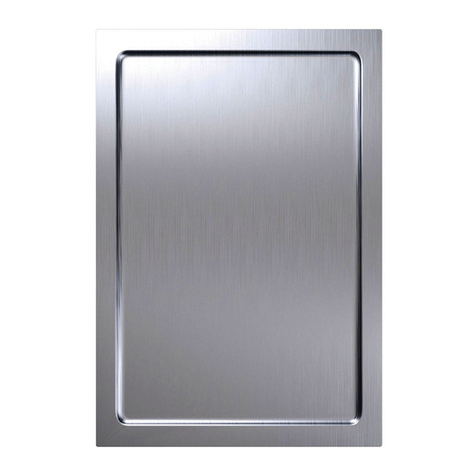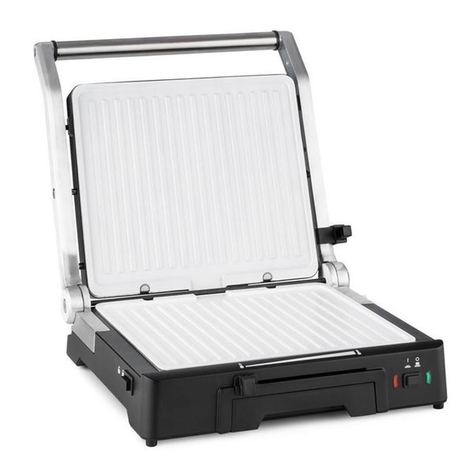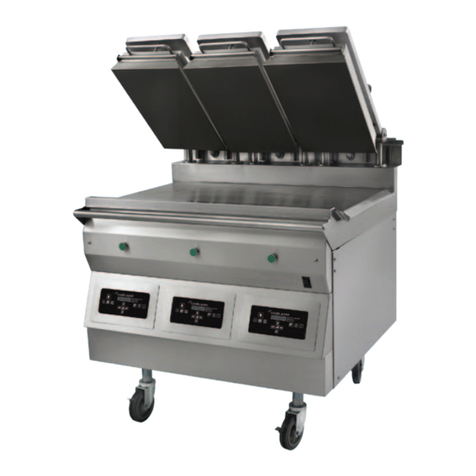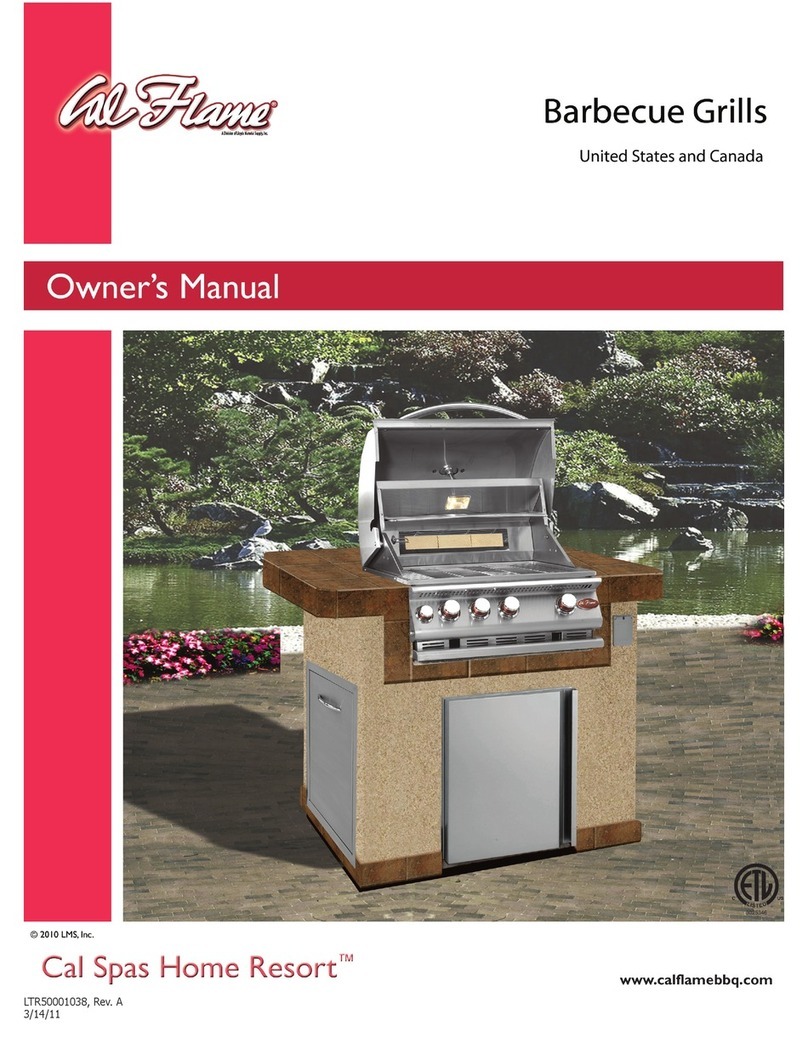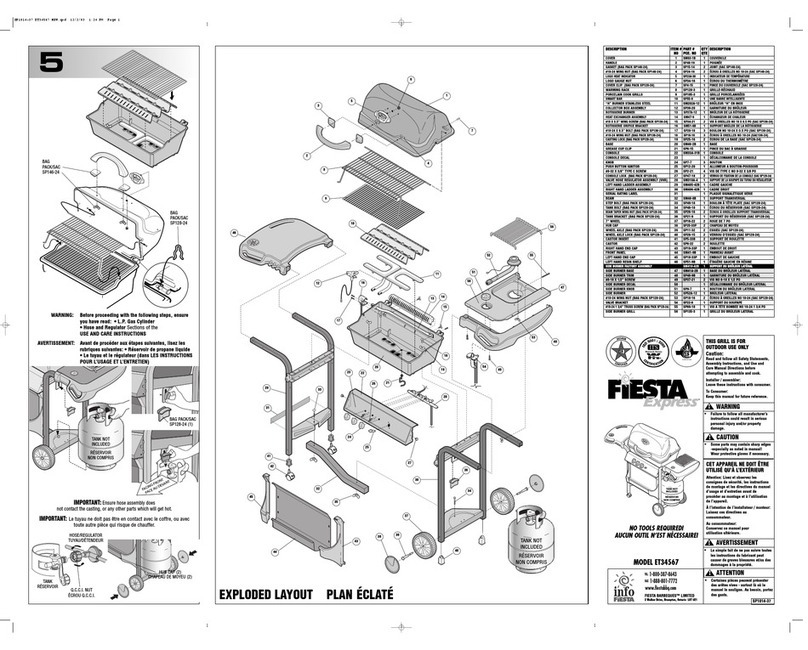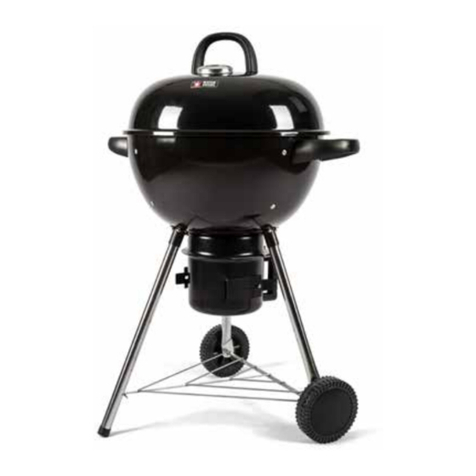
These instructions are for the Family Compact and Medium Cookers, however they
also apply to the Commercial Large, Deluxe, and Jumbo MultiKai Cookers.
The MultiKai Cookers are designed for use with Universal LPG. They are powered by
either a 2 ring burner model with a Total Nominal Gas Consumption of 12.6MJ/h or a 3
ring burner model with a Total Nominal Gas Consumption of 20.9MJ/h. Please refer to
the Data Label on the upper chamber of the cooker to identify your model.
Gas Connection
The Gas Connection to the burner is a male 1/4” BSP and is situated at the right hand
front of the cookers.
The Cookers must be connected to the gas cylinder with the Flexible Hose & Gas
Regulator supplied with the Cooker. DO NOT USE ANY OTHER HOSE &
REGULATOR. Ensure that the hose does not contact the hot surfaces of the cooker.
The hose should not be subjected to abrasion, kinking or permanent deformation and
should be able to be inspected along its entire length. If a replacement hose or
regulator is required, contact your local MultiKai distributor.
Remove all packaging materials before assembling the MultiKai Cooker.
Location
The MultiKai Cooker should be operated in a sheltered, well ventilated, outdoor
environment. Ensure the Multi Kai Cooker is at least 250mm clear of any flammable or
combustible materials and on a level surface. DO NOT OPERATE INDOORS, IN AN
ENCLOSED AREA OR AN INCLINED OR UNEVEN SURFACE.
Chemicals, flammable materials, or spray aerosol cans should not be stored near the
cooker either during use or while in storage. The cooker should also be clear of any
articles either on or leaning against it.
USE OUTDOORS ONLY
WARNING: Ensure the hose restraint is securely fitted to the gas cylinder on the large,
deluxe and jumbo models so that there is no strain on the gas connections. The chain
should be looped around the handle of the gas cylinder and should remain connected
except when changing or disconnecting the gas cylinder.
This appliance shall only be used in an above ground open-air situation with natural
ventilation, without stagnant areas, where gas leakage and products of combustion
are rapidly dispersed by wind and natural convection.
Installation Instructions
2
